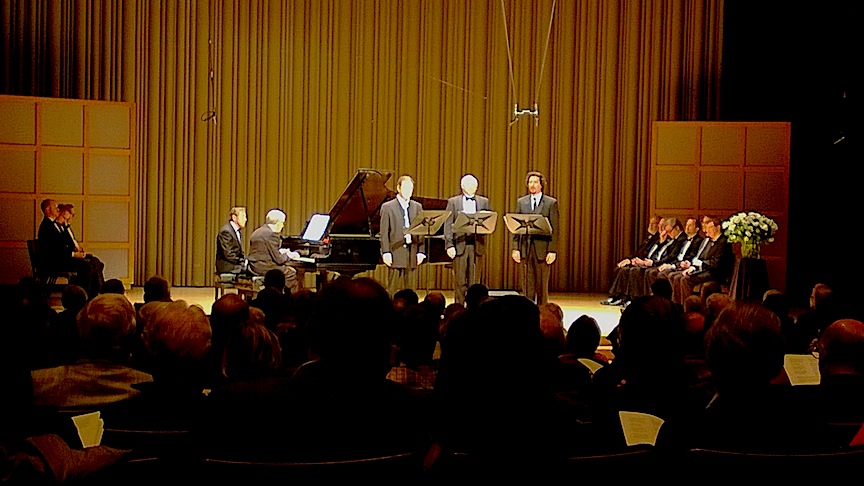
The first installment of the Aldeburgh Connection’s three-concert goodbye flourish devoted to the music of Benjamin Britten set a very high standard at the Glenn Gould Studio on Friday night.
- Classical Music 101: What Does A Conductor Do? - June 17, 2019
- Classical Music 101 | What Does Period Instrument Mean? - May 6, 2019
- CLASSICAL MUSIC 101 | What Does It Mean To Be In Tune? - April 23, 2019
Aldeburgh co-founders and co-artistic directors Stephen Ralls and Bruce Ubukata decided that their 31st concert season would be their last.
They also decided to turn that finale into a mini festival celebrating composer Benjamin Britten’s centenary and the influence of his partner, tenor Peter Pears. The couple was responsible for Ralls and Ubukata meeting each other in the seaside town of Aldeburgh way back in the 1970s.
The layers of inspiration went well beyond this on Friday’s programme, which was built on music for male voices in general and three singers in particular who acted as Britten’s muses: baritone John Shirley-Quirk (still alive), Pears and countertenor James Bowman (who only recently retired).
These singers inspired Britten to write many different pieces of music and were the trio for which the composer set T.S. Eliot’s Journey of the Magi, which became the fourth of Britten’s five Canticles.
That piece closed the official part of a programme that alternated Britten’s numerous and varied re-settings of songs by baroque composer Henry Purcell with original music — in particular Canticle I: My Beloved is Mine, Canticle II: Abraham and Isaac, and Canticle IV, the setting of Eliot’s Christmastime poem.
The songs highlighted solo as well as ensemble voices — the most ambitious being the racy Ballad of Little Musgrave and Lady Barnard Britten set for a friend in a German prisoner-of-war camp in 1943. The 10 male voices singing the piece included eight members of the St Thomas’s Church, Huron St, choir and their director, John Tuttle.
With Ralls and/or Ubukata at the piano, countertenor Daniel Taylor, tenor Benjamin Butterfield and baritone Alexander Dobson did a beautiful job with every piece they sang. Tuttle’s choristers were also impressive.
Britten often makes the singer’s job especially difficult by setting up challenging counterpoints to the sung line. Fortunately, all of the performers were able to negotiate the challenges with deceptive ease, laying out Britten’s translucent settings with inspirational clarity.
Ralls and Ubukata spoke beautifully of their personal and professional connections with Pears and Shirley-Quirk, while Taylor did the same (with wit and candour) for Bowman.
The careful, full interpretations of moving pieces coupled with the intimacy of the Glenn Gould Studio and the clear personal ties with the music made for a powerful emotional connection from evening’s opening to end.
It makes the last two concerts all the more worth catching (details here).
John Terauds
- Classical Music 101: What Does A Conductor Do? - June 17, 2019
- Classical Music 101 | What Does Period Instrument Mean? - May 6, 2019
- CLASSICAL MUSIC 101 | What Does It Mean To Be In Tune? - April 23, 2019



